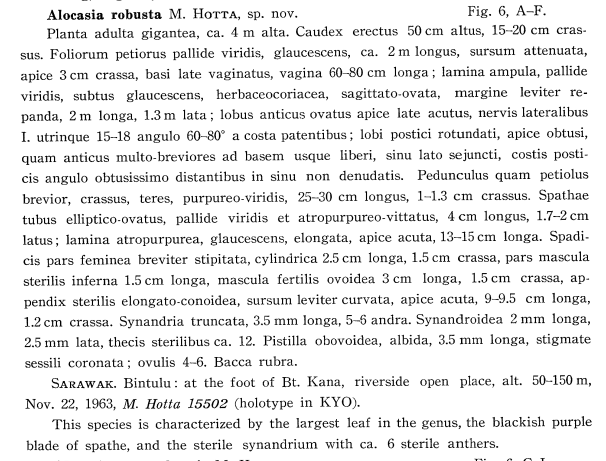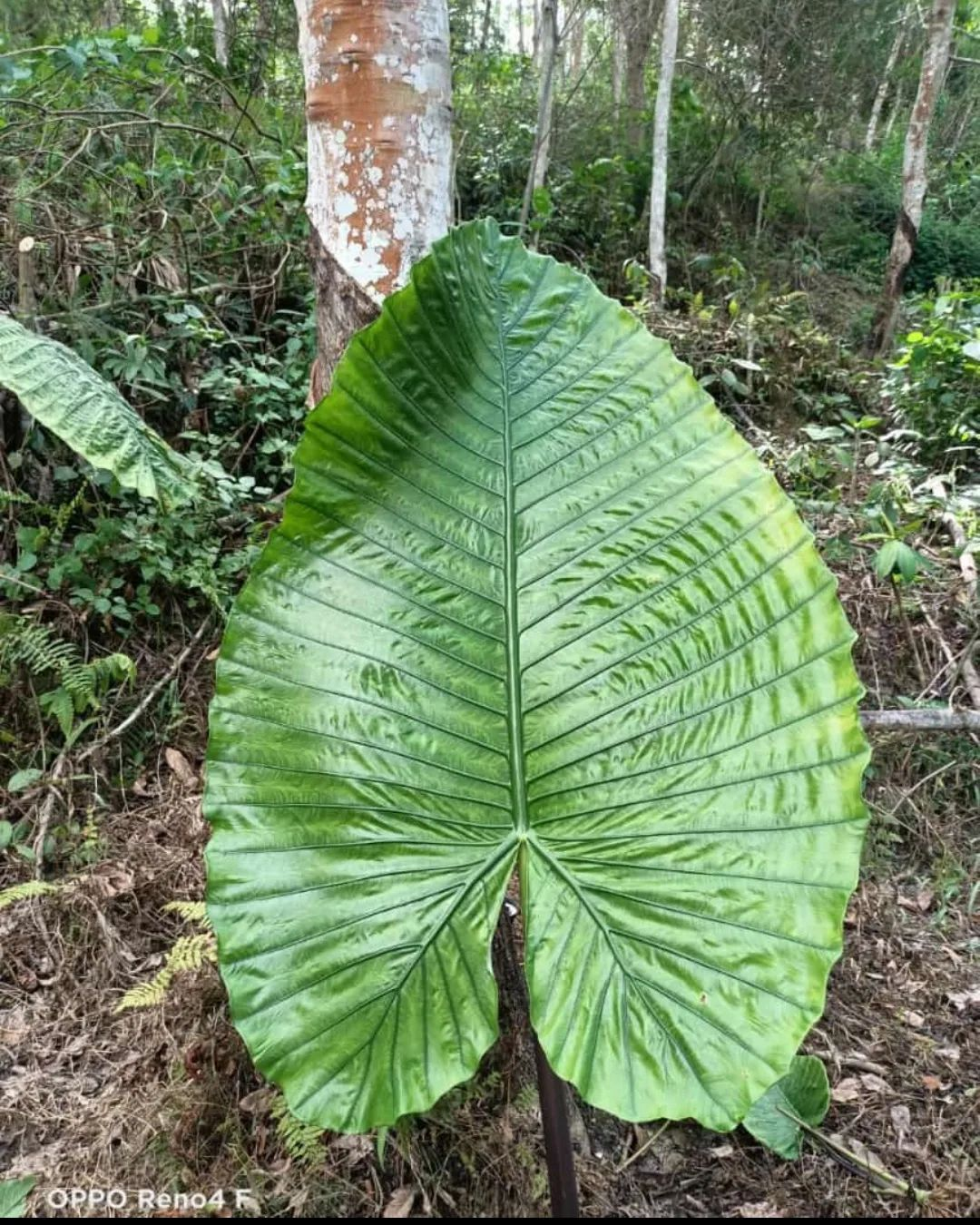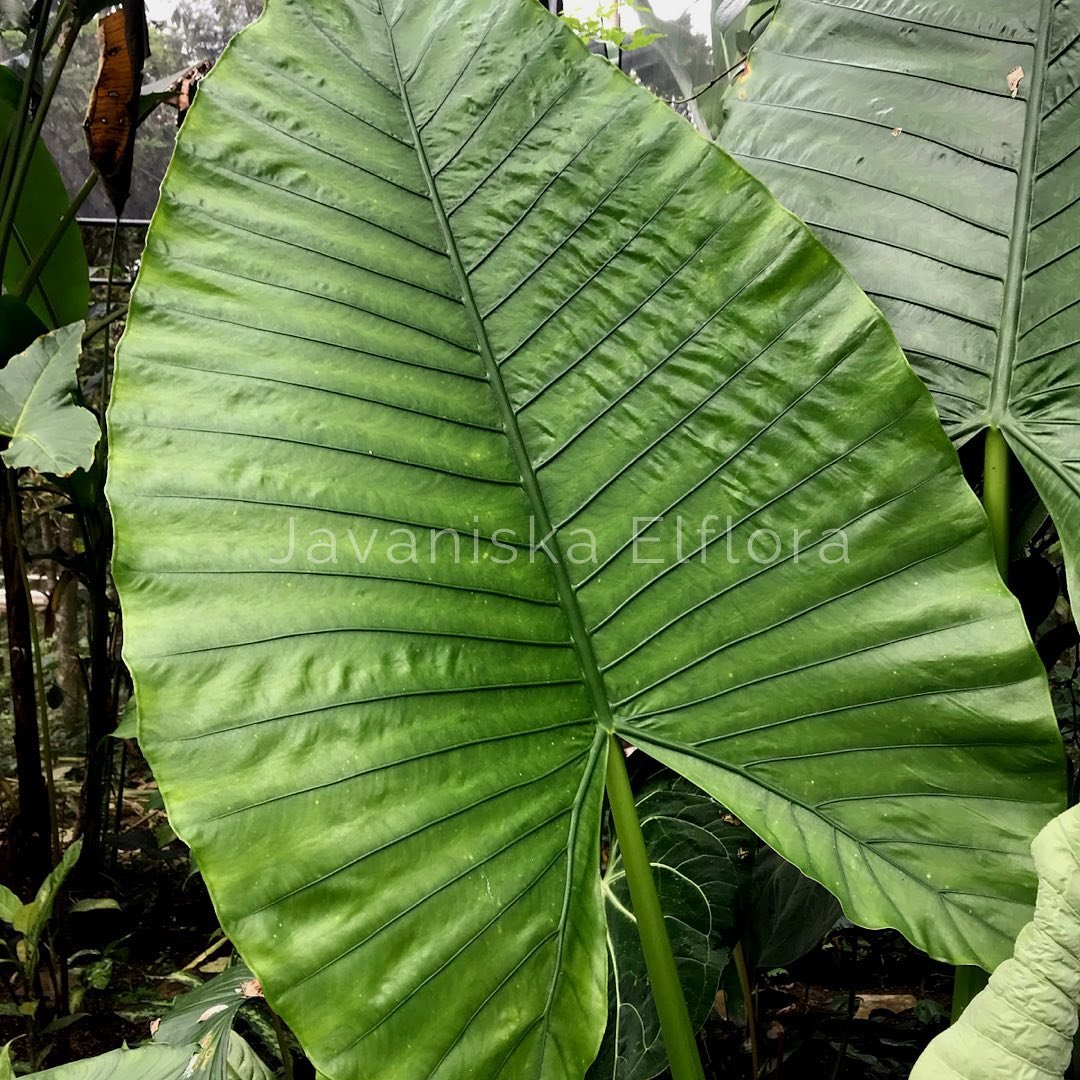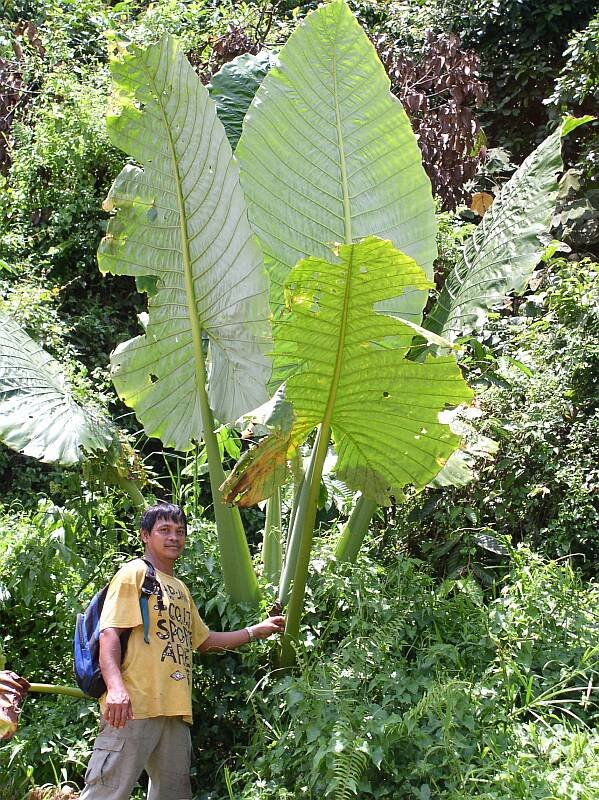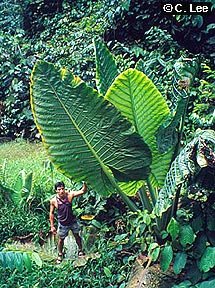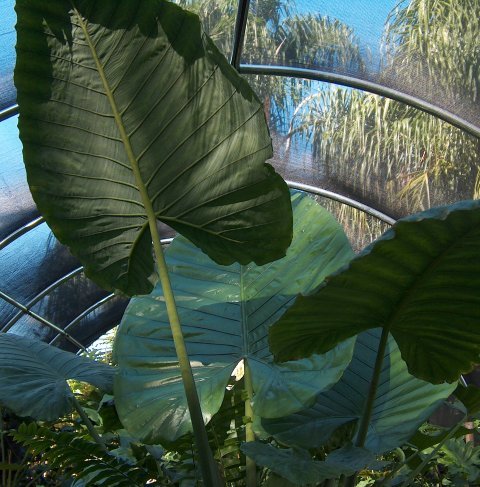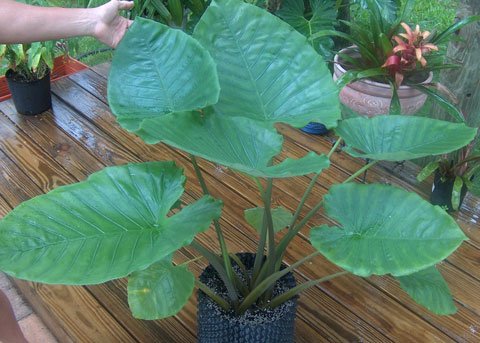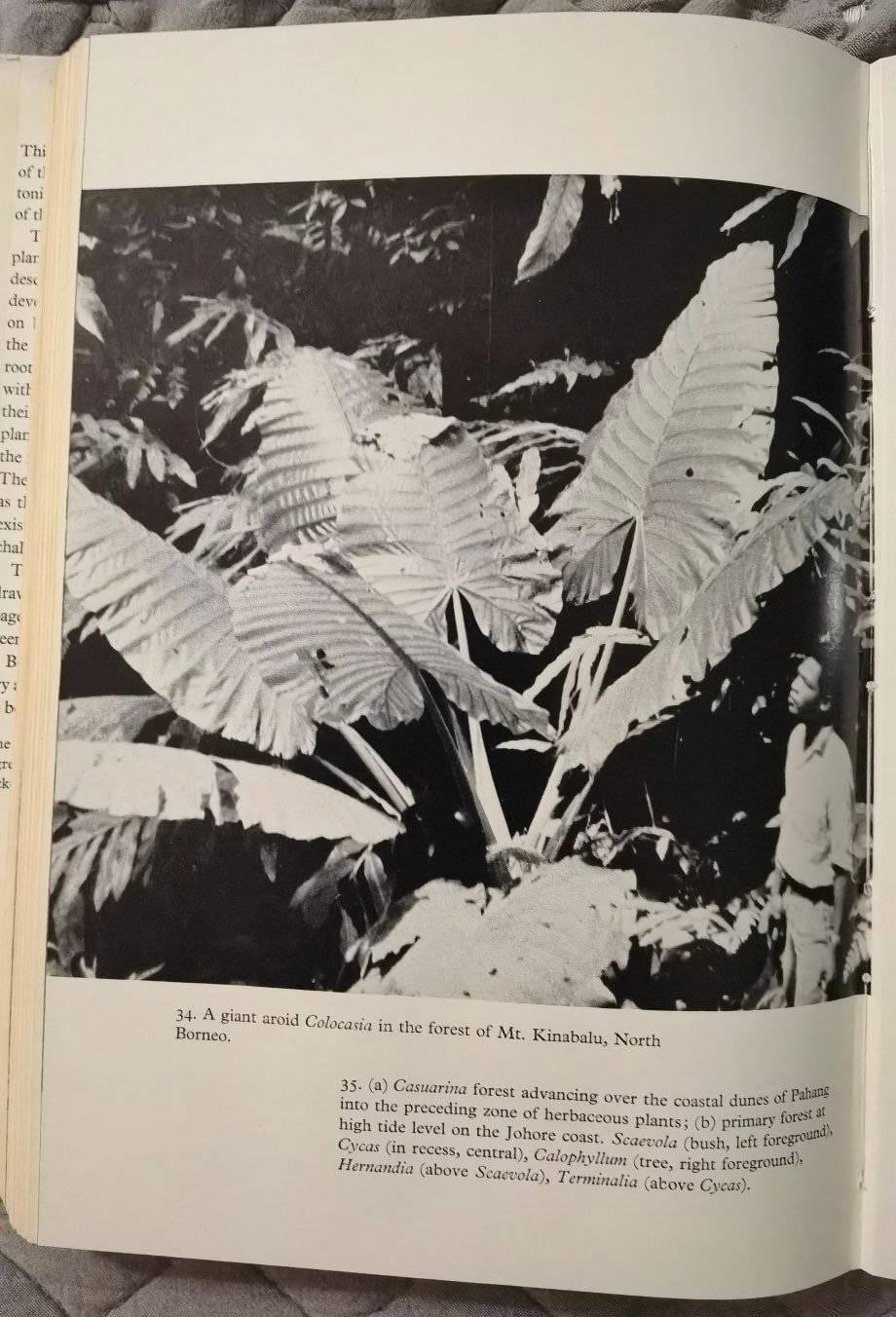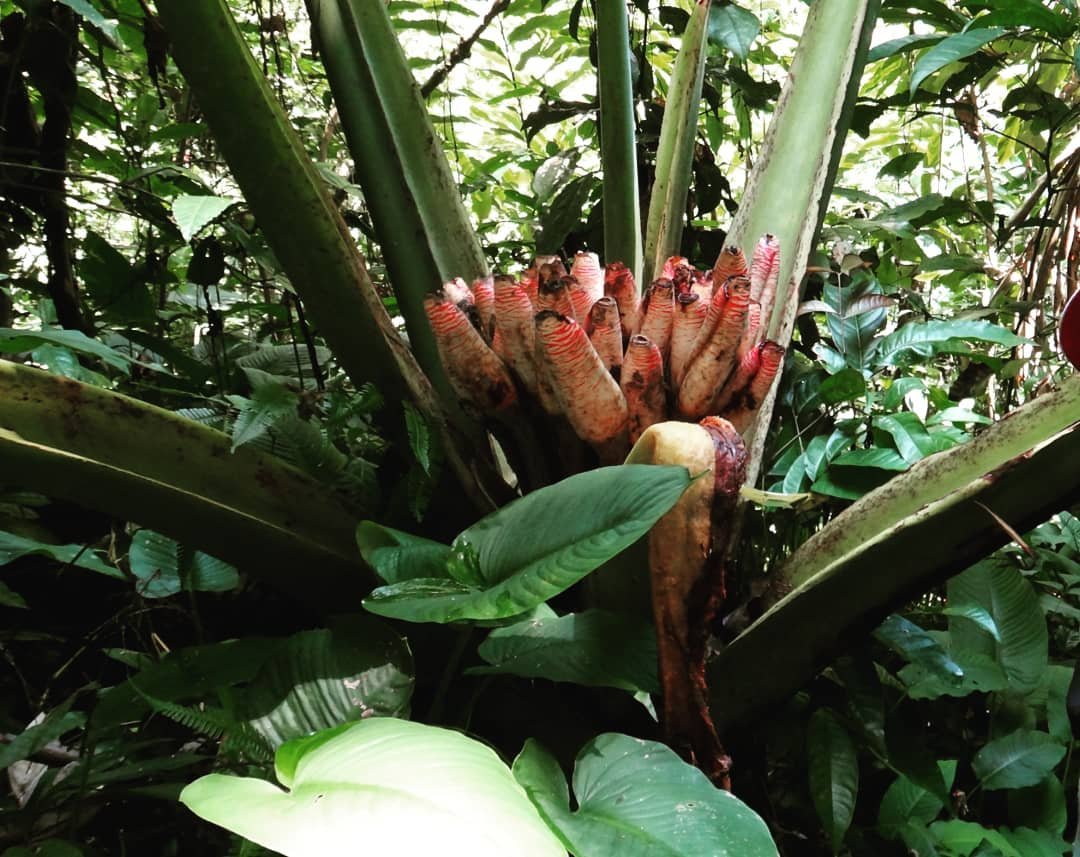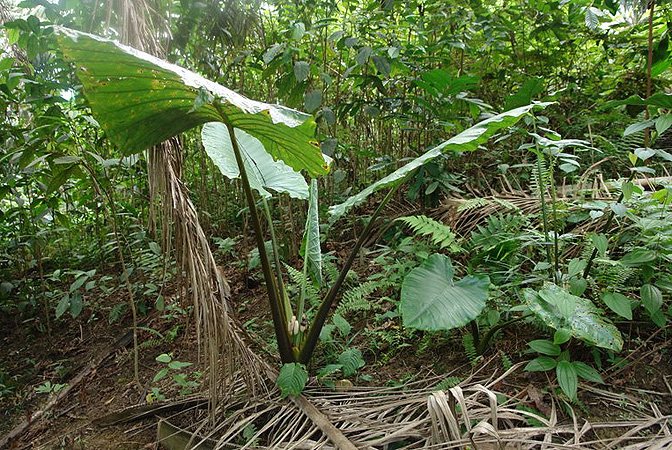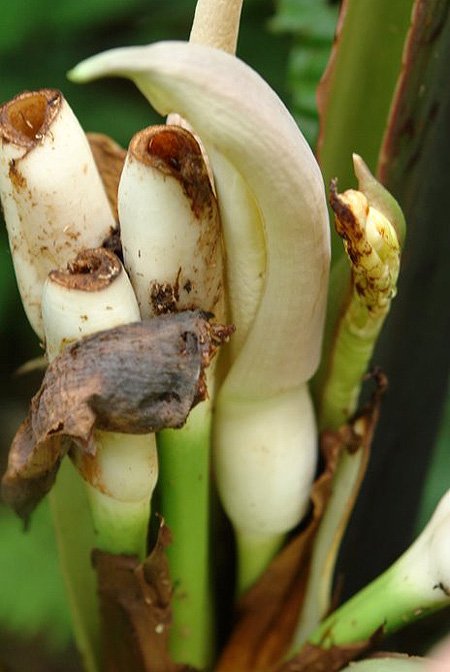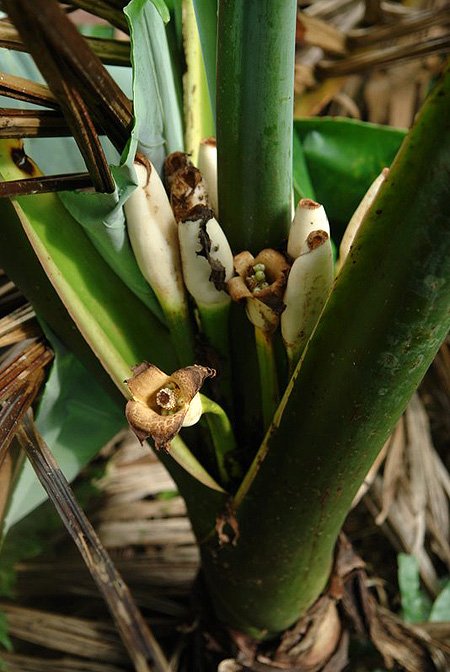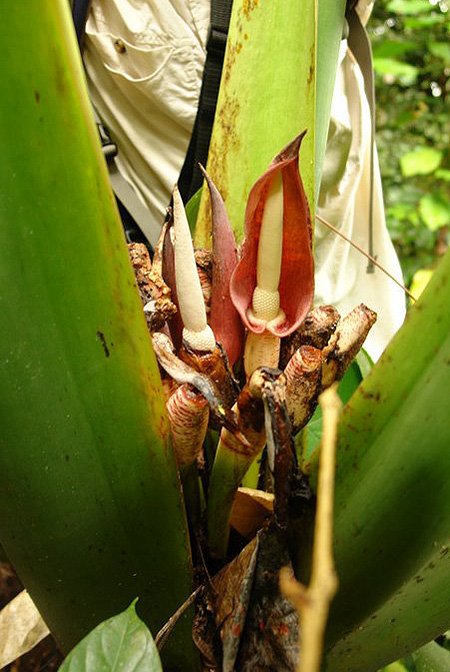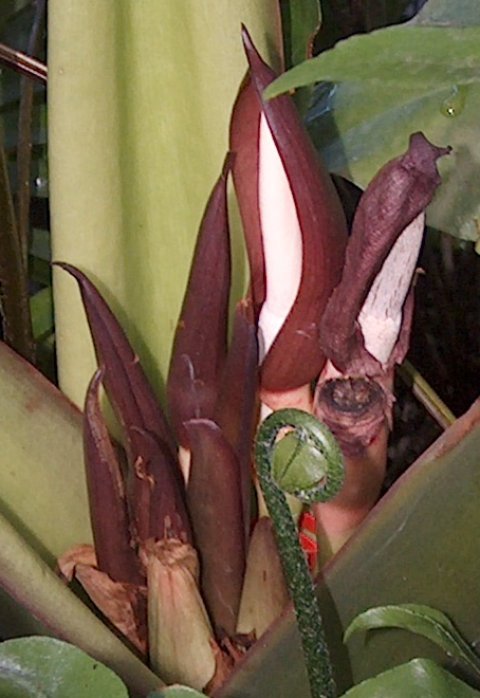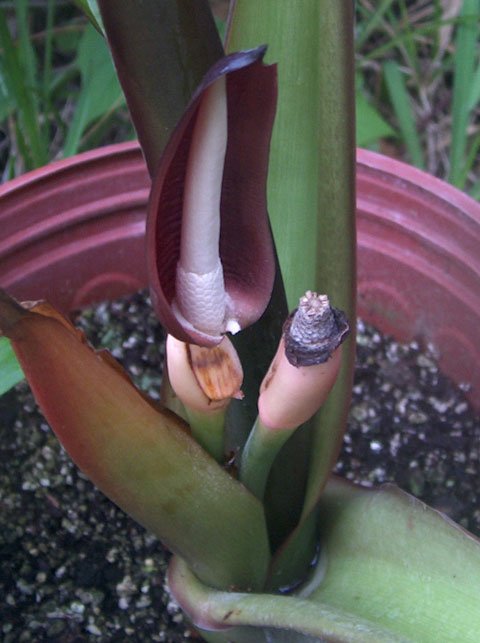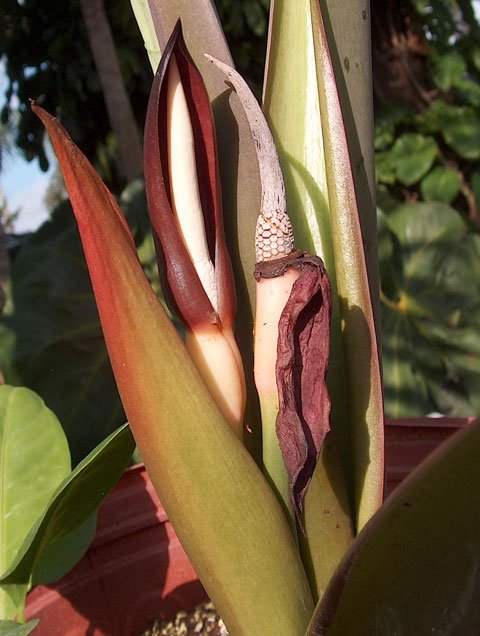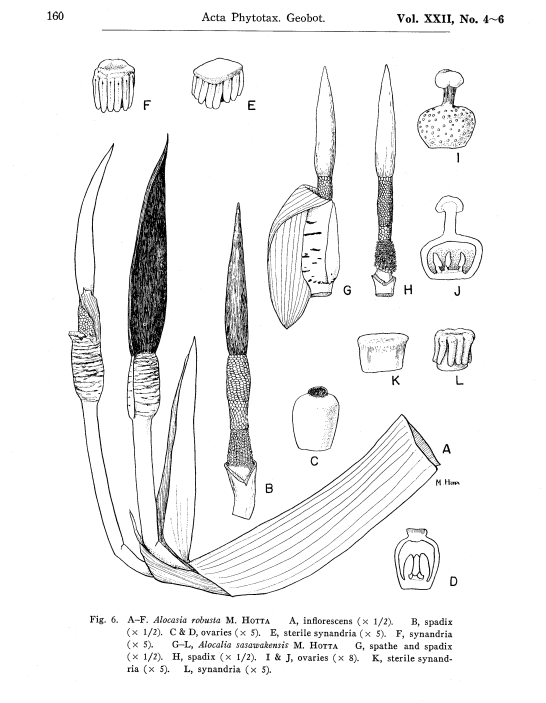ALOCASIA ROBUSTA
SYNONYMS: N/A
DISTRIBUTION: Widespread in Borneo, though mainly in the northwest, and with one record from the Natuna Islands.
CLIMATE: Tropical humid climate
Humidity is moderate throughout the year, ranging from 60% to 70%
Temperature is varies between the seasons - within the range of 48°F/9°C to 88°F/31°C during the day. Minimum temperatures never dip below 45°F/7°C
Rainy and humid season (October to May) and a dry season between June and October. The average annual rainfall is 1,200 mm
ECOLOGY: Wet but well-drained open disturbed places, road sides, platations, river banks, land slides, canopy gaps in lowland to lower montane forest.
SPECIES DESCRIPTION:
Gigantic arborescent herb to palmiform tree to 6 m tall with clear sap that almost instantly turns orange on contact with air; stem erect to decumbent, 15-30 cm diam. (the base swelhng to ca. 40 cm ), smooth; leaves several together: petiole smooth, somewhat glaucous, pale green to pinkish brown, ca. 1.5-3.5 m long, sheathing in the lower V3, with scattered flat + circular glands: blade ovato-sagittate, ca. 1.5-4 m long, ca. 80 cm to 2.5 m wide, slightly glossy mid-green adaxially, abaxially waxy glaucous, the margin entire to slightly sinuate; anterior lobe up to ca. 3.2 m long, widest at the base; anterior costa with 10-18 primary lateral veins diverging at ca. 70-80°; secondary venation not prominent, not forming interprimary collective veins; posterior lobes to ca. 90 cm long, rounded; posterior costae diverging at ca. right angles, bearing lamina right into the sinus (in juveniles peltate until leaf blades are ca. 30 cm long)
INFLORESCENCE:
Inflorescences ca. (10-)30-40 crowded together in the centre of the leafy crown, subtended by robust broadly lanceolate deliquescent to marcescent cataphylls; peduncles stout, hardly exserted from the cataphylls, ca. 15-20 cm long; spathe to ca. 20 cm long, constricted at ca. 4-5 cm from the base; lower spathe pale greenish ivory with few to numerous shiny colourless to (?or becoming) dark red horizontal glandular markings, ovoid, ca. 2.5 cm diam.; hmb cowl-like, by male anthesis the base sharply reflexed then the rest erect, forming a pollen-filled trough at the bottom, deep purplish pink to greyish ivory faintly suffused pink, ca. 15 cm long x 6 cm wide; spadix somewhat shorter than the spathe, ca. 15-19 cm long, sessile to very shortly stipitate; female zone subpyramidal, trigonous, 2-3 cm long, ca. 2 cm diam at base, tapering to ca. 1.5 cm diam. distally; pistils ivory; ovary subglobose, faintly longitudinally ridged, ca. 1.5 mm diam.; style slender, ca. 0.5 mm long or absent; stigma button-like to faintly 3-4-lobed; sterile interstice slightly wider than female zone, reduced to 1-2 whorls of small yellow synandrodia with the staminodes incompletely fused; male zone ca. 4 cm long, much expanded (ca. 2 cm diam.) in the part distal to the spathe constriction, below the spathe constriction ca. 1.2 cm diam; synandria rhombohexagonal, 1.5-2 mm diam., ivory, with the thecae overtopped by the synconnective; appendix dirty pale yellow to ivory, shghtly constricted at base, narrower than distal part of male zone, tapering gradually to a fine point; fruiting spathe whitish, sometimes borne quasi-laterally in a ring on the trunk below the leaf crown and then pendulous, the spathe dehiscing longitudinally; fruits reddish orange, rather small, ca. 4 mm diam., mostly single-seeded.
VARIEGATED FORMS: N/A
ETYMOLOGY: The specific epithet come from the Latin “robustus”, meaning strong, referring to the extremely large growth habit of this species.
NOTES:
1. A magnificent arborescent herb with, in the biggest examples, certainly the largest undivided leaf of any herbaceous plant (not counting the habitually tattering leaves of the biggest Musaceae, with as many as 18 main laterals on mature leaves) and challenging the few palms with large undivided leaves. It is strikingly glaucous on the underside. It is common and widespread in northern Borneo at low elevations, and it is remarkable that it was not described until 1967. From a distance it resembles, but is much larger than, Alocasia macrorrhizos, with a rather similar subtriangular ovato-sagittate leaf outline, which may account for it having been overlooked. Vegetatively it may be distinguished by the posterior costae with lamina to the sinus and the glaucous abaxial side to the lamina. The seedlings, even when quite large, have peltate leaves with the undersides glaucous and the whole glabrous (cf. Alocasia sarawakensis). The inflorescences are very different from those of Alocasia macrorrhizos, both in their clustered arrangement, and the thick marcescent/deliquescent cataphylls (bits of which often adhere to the open spathe), the ivory horizontally red-marked lower spathe and the thick greyish to purplish limb.
2. Though they are morphologically almost identical, plants observed in the living state in Sarawak and Sabah differ in the spathe limb colour and inflorescence odor. In the former, the spathe limb is purple and the inflorescence smells of decomposing beef extract; in the latter, the spathe limb is sometimes greyish, shghtly suffused with purple, and sweetly fragrant.
This may suggest that they are biologically differentiated by having differing pollinators, and warrants further investigation. In plants at Sepilok, I observed that the odour is produced from the inside of the lower spathe, not the spadix.
3. The sap turns orange on exposure - a feature not common in Alocasia, but known in allied Colocasia gigantea
4. Possible hybridity with Alocasia sarawakensis was noted under that species. Hay 10039 (cult. RBG Sydney Acc. No. 950376) appears in the vegetative state to be intermediate between Alocasia robusta and Alocasia wongii. At the Madai Falls, Sabah, the two putative parents grow together.
5. Ridley's Bornean record of Colocasia gigantea (reiterated by Merrill, loc. cit.), was based on a sighting at 'Byte Estate' near Sandakan, with no specimen preserved. Colocasia gigantea is unknown in Borneo, but bears some resemblance to Alocasia robusta - particularly in the large size and glaucousness of the leaf blade. It seems probable that Ridley, who was interested in Araceae, would have encountered Alocasia robusta, which is a common plant in northern Borneo, and I can only assume that this record is his misidentification of it
6. Alocasia grower and hybridizer LariAnn Garner has noticed that growing Alocasia robusta with a Nephrolepis variety "Macho Fern" changed the overall growth habit dramatically:
“While our other A. robusta plants hold their leaf blades from 45 degrees to over 90 degrees away from vertical, the A. robusta with the fern is holding three leaf blades nearly vertical. This makes the plant look more like the ones in some pictures I've seen where the plant is in native habitat with ferns similar to Nephrolepis.
We've learned that the most likely reason for the dramatic response is the balancing of the soil moisture levels that the presence of the active fern roots provides. Since the soil does not stay too moist for long, potentially damaging moisture-loving microbes don't have a chance to build up lethal population levels. Additionally, the ferns we thought were Nephrolepis in the native habitat pictures were possibly Diplazium or Athyrium species rather than Nephrolepis. We will be trialing with these ferns as well, but anticipate the results to be similar to that obtained with the Nephrolepis.
Other specimens seen: NATUNA ISLANDS: Pulau Bunguran, E of G. Ranai, van Steenis 1117 (BO); SARAWAK: Cult. RBG Sydney Acc. No. 940569 from Kubah National Park, Matang. Hay et al. 9416 (NSW). BRUNEI: Temburong Prov., Batu Apoi F.R., Poulsen et al. 43 (E, K). SABAH: Mt Kinabalu, E shoulder, Chew et al. 574 (K); Lahad Datu Rd, ca. 10 mi from jnct Sandakan-Kota Kinabalu Rd, Hay 10012 (SAN); Cult. RBG Sydney Acc. No. 950378 ex Madai Falls, Hay 10041 (NSW); Elopura, Leila Rd., Sandakan, Kadir A2698 (KEP, SING). KALIMANTAN: Central East Borneo, W. Koetai, No 45 Kombeng, Endert 5234 (BO. K, L).
CULTIVARS: N/A
HYBRIDS: Alocasia ‘Robudora’ (Alocasia odora x Alocasia robusta)

